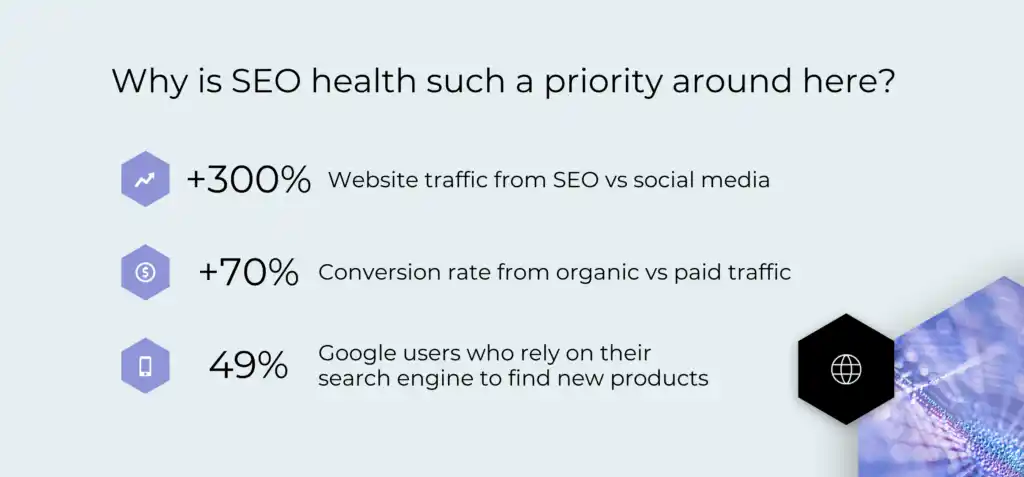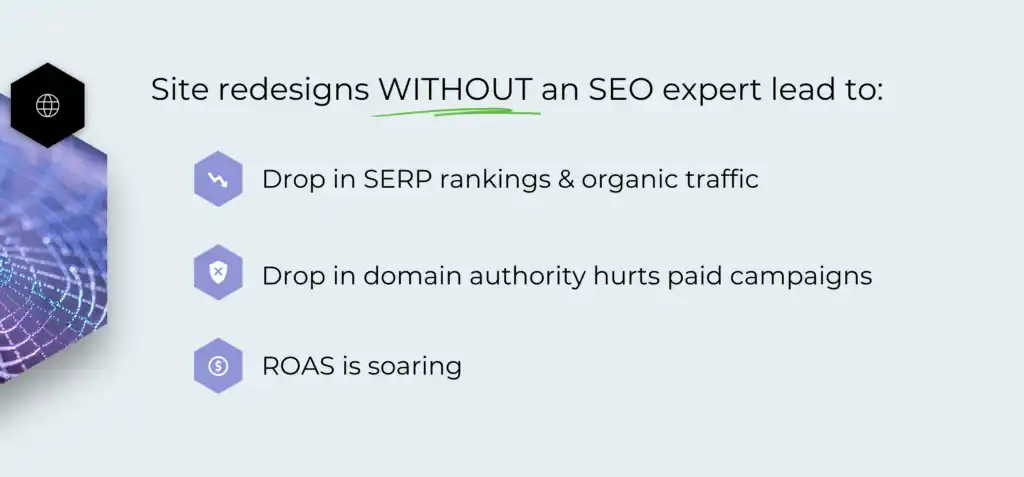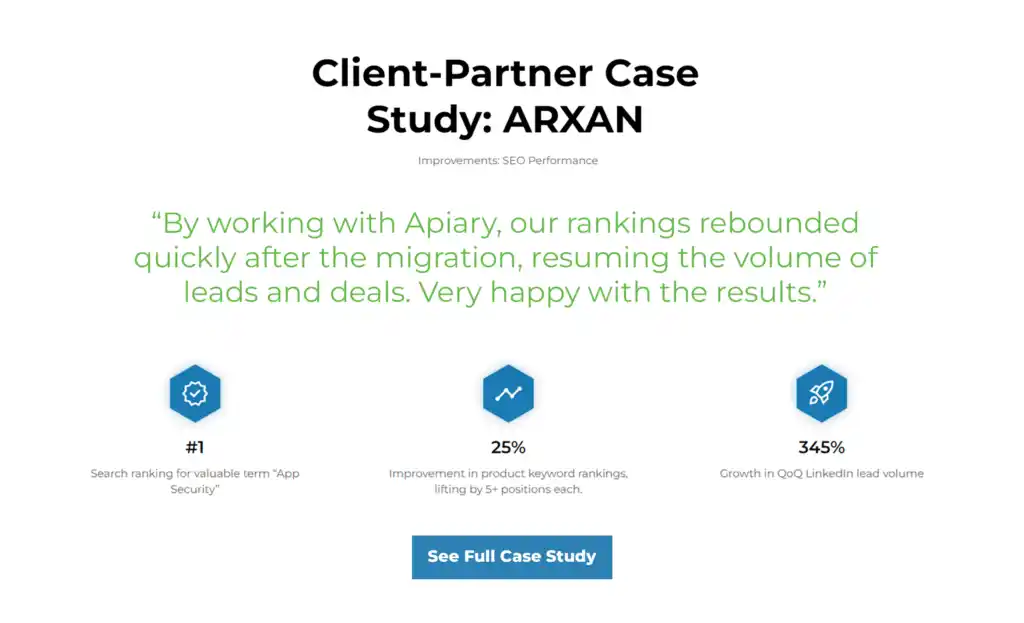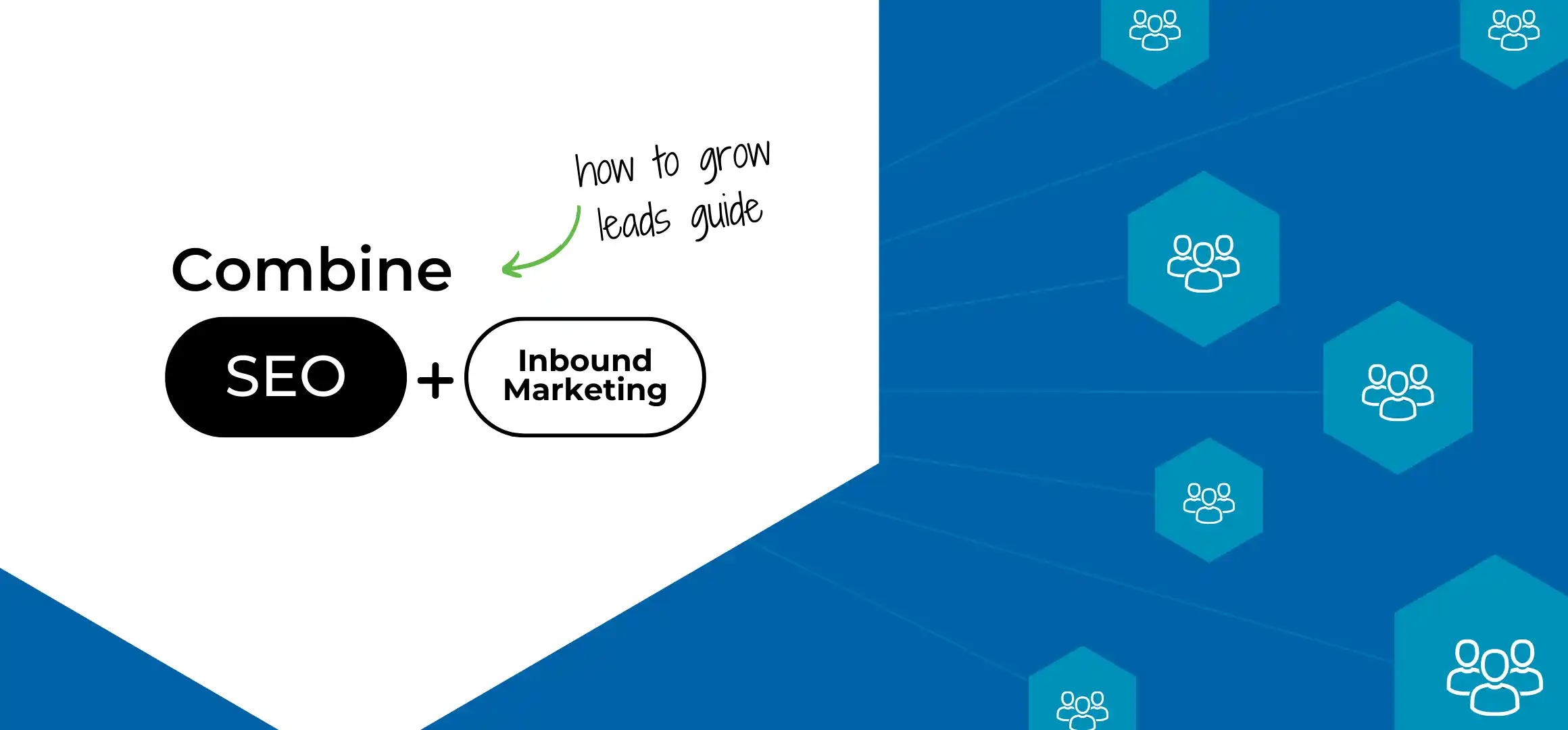
We started the year banging our tambourine with excitement about the newly redesigned ApiaryDigital.com. Triple woo!
But if you caught our 5 takeaways from rebranding, you saw that website redesign SEO was the very first stop in our process, and a north star that informed every UX and content decision.

Redesigning your website offers a prime opportunity to improve SEO rankings, but including SEO expertise in a website redesign is also a protection mechanism.
Without the skill and experience of an SEO expert, it’s very likely that your redesign project will hurt your rankings. We see this frequently.
To support a website redesign process that strengthens the technical health of your domain, this week’s Apiary POV is covering:
- What is website redesign?
- 8 reasons to invest in website redesign
- Why a redesign without SEO expertise slows growth
- The myth that redesigns hurt SEO (+ proof of the opposite)
- The only site redesign SEO checklist you need
What is website redesign?
Website redesign is the process of updating an already active website to improve performance.
A redesign can include wholesale changes across your entire website or only an adjustment or two. Whether big or small, if you’re changing anything on your website, that’s a redesign.
Some of these changes can include:
- Website layout (UX and UI)
- Site structure and information architecture
- Static content like service pages, product descriptions, etc
- Interactive content like quizzes, calculators, polls, or games
- Visual identity, including images, colors, typography
8 reasons to invest in website redesign
There are a variety of reasons why a brand might conclude that redesigning your website is a good idea. The investment decision rarely comes down to just one thing. It’s usually a collection of observations, including some or all of the following:
1. Looks like it was built in 2002
First impressions are a powerful thing. An outmoded website can cause your brand to be perceived as un-serious, out of touch, or lacking in excellence. A redesign can help solve this perception issue.
2. Poor user experience
If your site is difficult to navigate, you’re likely losing conversion opportunities. A redesign should improve the user experience so it’s easier for visitors to quickly find what they’re looking for. This is particularly important for brands with a large product catalog and/or more than one ideal customer avatar type.
3. Page speed is s-s-s-slow
This could technically be housed under poor user experience, but page speed is crucial on so many fronts that it warrants its own spot on this list. Google has been clear that page speed influences if/where your content will rank in organic search, as well as traffic to paid Google campaigns.
4. Refreshed brand identity
If your brand identity has significantly changed or is about to (merger, acquisition, CEO change), a website redesign can help communicate this change and affirm your values and messaging.
5. Mobile optimization
Think mobile responsiveness is the standard across the board now? Nope. We meet many brands who still don’t have mobile responsive sites (thank you Shopify for making that part extra tricky). A redesign can ensure that your website is optimized for mobile devices, providing a better experience for the significant percentage of mobile users.
6. Reduce bounce rates
An optimized site with seamless UX that encourages users to stay on your site for longer periods of time leads to a higher likelihood of conversion and/or creates the conditions for users to move deeper into the funnel.
7. Enhance SEO
A website redesign provides an opportunity to make SEO improvements that result in organic traffic gains and improved performance of paid media campaigns. (We’ll dig into this further below.)
8. Outshine competitors. More reach. More leads.
Many of the items listed above subsequently lead to other benefits, like gaining an edge over competitors, and winning new traffic and lead sources.
Why a redesign without SEO expertise will hurt your bottom line
The single biggest mistake we see in website redesigns is over-emphasizing the visual aspect of the redesign and ignoring or insufficiently considering SEO. The result? You’ve unknowingly wrecked your domain authority.
Many brands believe that by prioritizing page metadata and content optimizations (the highly visible, user-facing elements), they’ll get an SEO gold star.
And while yes, these things do influence SEO health, they are only part of what’s required for a site that’s fully optimized for performance.
For example, if your metadata and page content is stellar but your redesign implemented a new site structure and the right 301 redirects weren’t turned on or canonical tags aren’t set up correctly, your users will encounter a series of frustrating 404 errors and/or Google will not index the right URLs.
What’s worse? These technical SEO issues can lead to crawling and indexing problems, which could result in the loss of all organic traffic. ALL of it.
Most brands who experience this wind up spending years and 100s of thousands of dollars trying to fix one broken element at a time. Fun times.
Not including an experienced SEO expert in your website redesign process runs the risk of a drastic dip in your domain authority, which requires significant time and budget to build back up.
3 problems that website redesign SEO will mitigate against:
ⓧ Organic traffic will decrease.
The lines of communication between your site and Google need to be crystal clear so that when a user searches for keywords that directly relate to your brand, Google can quickly tell that you have high quality and relevant content for that user.
Poor technical SEO interrupts this line of communication, which reduces your ability to rank on the first page of search results. Only 0.63% of Google searches actually click on results from the second page, so ranking on the first page is crucial.
ⓧ Paid traffic will decrease.
It’s a common misunderstanding that SEO only impacts organic traffic. Absolutely not true. Consider this:
Google’s value proposition is based on the speed and quality of their user experience. The WHOLE user experience, which includes the landing page that your paid ads are driving traffic to.
Did you catch that? In Google’s eyes, your website is part of their customer experience.
If your landing page is not optimized for page speed, visual stability of the page, and input interactivity, the algorithm will squash traffic to your paid campaigns. Paying for an ad does not make you exempt from the standard they expect.
ⓧ ROAS will climb and climb.
This is an inevitable offshoot of problem #2.

The myth that redesigns hurt SEO (+ proof of the opposite)
Before we go any further, there’s one big SEO myth we need to dispel:
Many sites briefly see dips in their rankings immediately after launching a redesigned website. This happens because search engines are taking a beat to crawl your new site.
Some SEO outfits claim this is proof that site redesigns are always bad for SEO. Let’s stay friends, but we vehemently disagree.
If your site is optimized by Technical SEO experts, Google’s bots will understand your new site structure right away. Any traffic dips will be slight and stabilize quickly.
Humble brag moment… Apiary has relaunched multiple sites with immediate IMPROVEMENTS to search performance and no traffic dips whatsoever.
The ramifications of substantial and sustained loss of SEO positions and organic traffic during a website redesign are costly, time-consuming, and could even send a business under if not remedied swiftly.
In these cases, most businesses will need to turn to SEO consultants to try to reverse the damage, which isn’t always easily or quickly repairable.

The only site redesign SEO checklist you need
Technical audit
- Crawl the current site to identify any broken links (Screaming Frog is a tool we like.)
- Confirm mobile friendliness – a site that’s not mobile responsive can have a negative impact on SEO and also delivers a poor user experience
- Run a baseline ranking report analyzing your site traffic, rankings, keyword performance, and site speed
Content gap analysis
- Audit existing content to identify opportunities for improvement
- Analyze competitors for insights to inform your content strategy
- Identify net new content opportunities or keyword gaps
Keyword research
- Conduct keyword research to identify the greatest keyword performance opportunities, including an assessment of keyword difficulty
- Map target keywords to URLs
Content optimization
- Optimize existing content for targeted keyword inclusion
- If net new content creation is warranted, provide SEO guidelines for content creators
- Confirm target keywords are included in page titles, meta descriptions, headers, and throughout page content
Image optimization
- Confirm that all images use descriptive filenames
- Confirm that all image titles and alt text are aligned with the keyword target for the page where each image is located
- Optimize site speed by compressing and minimizing image file sizes
URL structure
- Confirm 301 redirects point ALL site URLs to the new location *Pay extra attention here. This is the MOST commonly missed step*
- Confirm that a custom webpage, 404 page is available
- Doublecheck the list of site pages to make sure all resolve under the new domain
robots.txt
- Update robots.txt and check it isn’t blocking important site pages
XML sitemap
- Update the XML sitemap with any net new domain pages
- Crossreference the XML sitemap with the updated domain/URL structure
Analytics
- Update your Google Analytics profile to track the new domain (traffic and eCommerce data)
- Set up Google Search Console profile for the new domain
- Check new Search Console profile to make sure data is present
Final pre-launch checks
- Crawl the staging environment for broken links
- Confirm the accuracy of all canonical tags
- Update all Hreflangs to reflect the new domain
Post-launch monitoring
- Test site speed
- Routinely check site performance to catch technical or content issues as they emerge
- Publish new content weekly to protect your redesign investment and keep your site relevant and ranking
- Monitor rankings post launch in Search Console and Google Analytics
- Be on the lookout for new Google updates (their frequency/volume is unpredictable) that require modifications to keep your site current with Google’s latest standards
TL;DR on website redesign SEO
- Focusing on the visual aspects of your redesign, to the exclusion of SEO, results in performance dips in organic traffic and paid traffic, and soaring ROAS.
- Metadata and content optimizations are NOT the complete picture of SEO health. Technical SEO needs close attention.
- A decline in SEO performance after launching a new website is NOT inevitable. Skilled SEO experts can eliminate or significantly alleviate SEO dips at launch.
- SEO is not a one-time project. Even if your website redesign goes swimmingly well and shoots your site to the first page of Google, in order to keep that placement, you MUST maintain a regular cadence of quality content (weekly is the minimum!) to ensure that your domain authority and relevance remain high.
Want our website redesign SEO checklist? Check it out.




